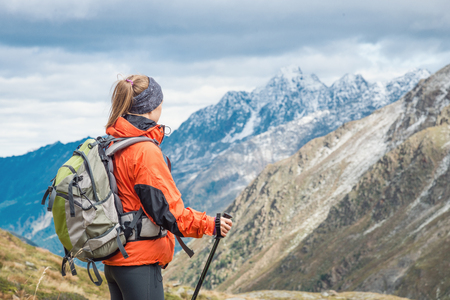Understanding Local Wildlife Risks
America’s vast wilderness tells a story of diverse landscapes and the wild creatures that call them home. Whether you’re trekking through the forests of the Pacific Northwest, camping in the Rocky Mountains, or exploring the wetlands of the Southeast, each region presents its own set of animal encounters—some awe-inspiring, others potentially hazardous. Grizzly bears, black bears, cougars, wolves, rattlesnakes, alligators, and even curious raccoons or bold coyotes are just a few of the species adventurers might face. Understanding which animals are native to your area is more than just an interesting trivia point; it’s a crucial first step in preparing for safe outdoor activities and handling emergencies when nature gets unpredictable. Each animal presents unique risks: venomous snakes can hide along sun-warmed trails, bears may be drawn by the scent of food at campsites, and sudden encounters with moose or elk during their rutting season can turn dangerous quickly. By getting familiar with local wildlife profiles and behavior patterns, you’ll not only enhance your appreciation for America’s wild spaces but also sharpen your defensive strategies for those rare moments when curiosity on both sides turns into confrontation.
2. Reading Animal Behavior
Understanding how to read animal behavior is a critical skill for anyone venturing into America’s wild landscapes. Wild animals often signal their emotional state long before an encounter escalates into danger. Recognizing these visual and audible cues can mean the difference between a safe retreat and an emergency situation.
Essential Signs of Stress, Aggression, and Territoriality
Animals communicate through body language and sounds. Knowing what to look and listen for helps you assess risk quickly. Below is a quick-reference table outlining common behavioral signals exhibited by key wildlife species in U.S. wilderness areas:
| Animal | Visual Cues | Audible Warnings | What It Means |
|---|---|---|---|
| Black Bear | Standing on hind legs, jaw popping, swaying head | Loud huffing, woofing, jaw snapping | Bear feels threatened or is protecting cubs/food |
| Coyote/Wolf | Ears laid back, hackles raised, direct stare | Barking, growling, yipping (coyotes) | Packing up for defense or warning you away from den/kill site |
| Bison/Buffalo | Pawing ground, raising tail, head lowered | Snorting, low bellows | Preparing to charge; strong territorial signal |
| Mountain Lion (Cougar) | Crouching, tail twitching, ears flattened | Growling, snarling, screeching (rare but possible) | Preparing to attack or defend territory/cubs |
| Mule Deer/Elk/Moose | Ears back, raised hackles, stomping hooves | Loud snorts or grunts | Nervous or agitated; moose especially aggressive with calves nearby |
| Rattlesnake | Coiled body, raised head, vibrating tail rapidly | Loud rattling sound with tail segments shaking together | A defensive warning—do not approach further! |
The Importance of Context and Environment
Your location matters: A bear in Yellowstone may act differently than one in the Smoky Mountains. Always consider the season (breeding or calving times increase aggression) and your proximity to young animals or food sources.
Key Takeaway:
If you notice any of these signs—visual or audible—slowly increase your distance without turning your back on the animal. Remain calm and avoid sudden movements. Understanding these warnings gives you valuable seconds to react safely during any wild encounter.

3. Proactive Prevention Strategies
Before you ever encounter a wild animal, the most effective defense is a proactive approach. Across America’s national parks and remote backcountry, seasoned hikers and rangers alike rely on a blend of cultural wisdom and practical methods to minimize risky wildlife interactions. The first line of defense often starts with noise—making your presence known along trails by talking, clapping, or using bells can alert animals before you get too close. This simple yet powerful habit is deeply embedded in the hiking culture of places like Yellowstone and Glacier National Park, where surprising a bear or mountain lion could have dire consequences.
Trail Etiquette: Making Yourself Known
American outdoor enthusiasts understand that silence isn’t always golden. By chatting with your group, singing, or purposefully scuffing your boots on rocky paths, you give animals ample warning to move away. In areas notorious for bear activity, such as the Pacific Northwest or the Rockies, hikers often attach bear bells to their backpacks or use trekking poles to create rhythmic sounds. These strategies not only help prevent dangerous encounters but also foster a sense of camaraderie among fellow trail-goers who share the same respect for wilderness safety.
Campsite Management: Keeping Wildlife at Bay
Proper campsite management is another cornerstone of prevention. In U.S. national parks, it’s common practice to store food in bear-resistant containers or hang it from trees at least ten feet off the ground and four feet away from the trunk—a tradition passed down through generations of backpackers. Campsites are routinely cleaned of crumbs and scented items, and cooking areas are set up far from sleeping quarters. These techniques reflect both regulatory guidelines and community knowledge about minimizing attractants that could lure curious or hungry wildlife into camp.
Cultural Roots and Ranger Wisdom
The ethos of “leave no trace” runs deep in American outdoor culture, shaping how visitors interact with wild spaces. Rangers across the country educate guests on specific animal behaviors—such as never approaching elk during rutting season or giving bison a wide berth at all times. Local signage often reinforces these messages, blending folklore (like the legendary cautionary tales told around campfires) with contemporary science to guide modern adventurers safely through unpredictable environments.
By combining these prevention strategies—trail noise, disciplined campsite management, and cultural awareness—you’re not just protecting yourself; you’re contributing to the ongoing legacy of stewardship that defines America’s wild places.
4. Emergency Defensive Responses
When Americans encounter wildlife in emergency situations, quick thinking and adherence to both traditional wisdom and modern safety protocols can make the difference between a close call and a tragic event. Different wild animals demand distinct responses, shaped by generations of lived experience and evolving expert guidance. Below is a breakdown of immediate defensive actions for some of the most common and dangerous wildlife encounters in the United States.
Bears: Black vs. Grizzly
| Action | Black Bear | Grizzly Bear |
|---|---|---|
| Stay Calm | Yes | Yes |
| Avoid Eye Contact | Yes (look at the bear’s feet) | Yes (look at the bear’s feet) |
| Back Away Slowly | Yes, don’t run | No, stand your ground if charged |
| Make Yourself Big & Loud | Yes, to deter approach | No, remain calm and avoid sudden movements |
| If Attacked | Fight back aggressively, aim for face/muzzle | Play dead: lay on stomach, protect neck/head |
| Bearing Spray Use | Yes (if available) | Yes (if available) |
Mountain Lions: The Art of Appearing Dangerous
- Stand Tall: Raise arms, open jacket to appear larger.
- Maintain Eye Contact: Never turn your back or run; this triggers the predator instinct.
- Loud Noises: Shout firmly but do not scream in panic.
- If Attacked: Fight with everything—sticks, rocks, fists—aiming for eyes and face.
- No Sudden Movements: Back away slowly if possible while facing the animal.
Snakes: Venomous Encounters on Trails and Fields
- Freeze Instantly: Sudden movement can provoke a strike.
- Sight Identification: Don’t try to handle or kill it—identify from a safe distance if possible.
- Back Away Slowly: Give the snake space; most will not chase humans.
- If Bitten:
- No tourniquet or sucking venom;
- Keeps bitten limb below heart level;
- Remain calm and seek immediate medical help;
The Role of Traditional Knowledge & Modern Guidelines
The American outdoor ethos blends inherited wisdom with modern science. Grandparents teach children never to surprise a bear near berry patches or cubs. Park rangers update hikers about current best practices—like carrying bear spray and knowing how to use it correctly. For snakes, old advice about “cut and suck” has been replaced by clear emergency protocols as outlined by agencies like the CDC and National Park Service.
In every scenario, staying composed, respecting wildlife boundaries, and understanding species-specific behavior are central themes. These time-tested responses—whether practiced in Appalachia’s forests or the rugged Rockies—are part of an ever-evolving toolkit that keeps Americans safer when nature’s wild side emerges unexpectedly.
5. Essential Gear and Tools
Stepping into the American wilderness means preparing for more than just breathtaking landscapes; it’s about being ready for unpredictable wildlife encounters with the right gear in hand. Across the United States, outdoor enthusiasts have developed a toolkit of essential items that serve as both deterrents and lifesavers in emergency situations.
Bear Spray: The Unofficial Guardian of the Backcountry
Among seasoned hikers, bear spray is considered a non-negotiable piece of equipment when venturing into bear country, particularly in regions like the Rockies or Alaska. This powerful pepper-based deterrent creates a protective cloud, providing crucial seconds to retreat during an aggressive encounter. Its effectiveness has made it a staple, often attached to backpacks within easy reach, reflecting a culture of preparedness ingrained in the American outdoor ethos.
Whistles and Alarms: Small Tools, Big Impact
A loud whistle isn’t just for signaling help—it’s also a proven way to alert animals to your presence and avoid surprising them on the trail. Many local communities encourage carrying whistles or personal alarms, especially in dense forests where visibility is limited. These simple tools can startle wildlife such as cougars or moose, giving you a chance to back away safely without escalating the situation.
Regional Adaptations: Tailoring Gear to Local Threats
Diverse ecosystems across America demand unique approaches. In rattlesnake-prone deserts, snake gaiters protect legs from unexpected strikes. In alligator habitats of the Southeast, trekking poles are wielded not just for balance but as distance-makers between humans and reptiles. Local outfitters often customize kits—like including coyote deterrent sprays or reflective dog vests for those hiking with pets—demonstrating how communities respond creatively to the specific risks their wild neighbors present.
The Culture of Preparedness
This culture extends beyond individual adventurers; schools and outdoor clubs host training sessions on using gear effectively, while park rangers demonstrate techniques for deploying bear spray or using noise-making devices. With every tool comes a shared understanding: being equipped isn’t about fear, but respect—for nature’s unpredictability and for our place within it.
6. After the Encounter: Reporting and Recovery
Guide to Responsible Reporting
Once you have safely navigated a wild animal encounter, it’s crucial to document and report the incident to your local authorities. In the United States, this typically means contacting your state’s Department of Fish and Wildlife or the local ranger station if you’re in a national park or forest. Provide as many details as possible—location, time, species involved, and your actions. Clear communication not only helps officials track animal behavior but also enables them to issue timely public advisories or implement safety measures in high-risk areas.
Seeking Medical Attention
If you sustained any injuries—even minor scratches or bites—it’s essential to seek medical care immediately. Many wild animals can carry diseases such as rabies or tick-borne illnesses that might not show symptoms right away. Visit the nearest urgent care center or emergency room, and be prepared to describe the animal and circumstances of the encounter. Medical professionals will assess your risk, administer necessary treatments, and guide you through follow-up steps for monitoring your health.
Supporting Community and Conservation Efforts
Your experience doesn’t end when you leave the scene; it can contribute to broader community safety and wildlife conservation efforts. Get involved with local organizations that educate about coexisting with wildlife, participate in neighborhood watch programs for rural or suburban communities, or join initiatives that promote habitat preservation. Sharing your story at town meetings or online platforms not only raises awareness but also encourages responsible outdoor behavior and supports science-based management of wild animal populations.
Balancing Safety with Stewardship
Reporting incidents isn’t just about protecting people; it’s about fostering a culture of respect for nature. By following these steps—responsible reporting, seeking prompt medical attention, and engaging in community conservation—you help create a landscape where humans and wildlife can coexist safely. Your vigilance becomes part of a larger movement toward understanding our shared environment, ensuring that breathtaking encounters remain awe-inspiring rather than dangerous.


